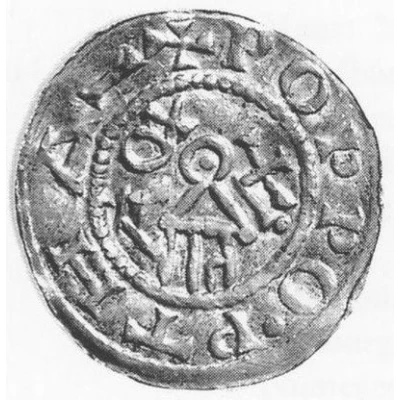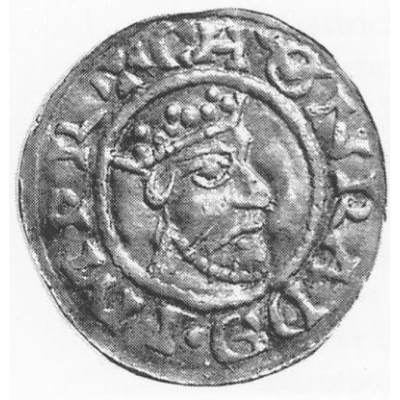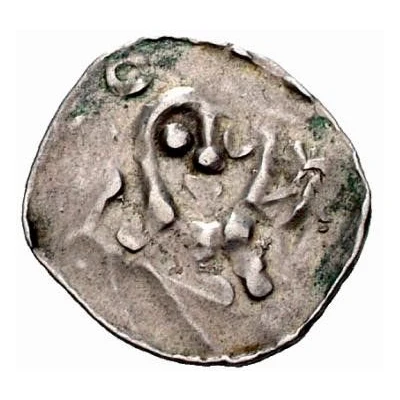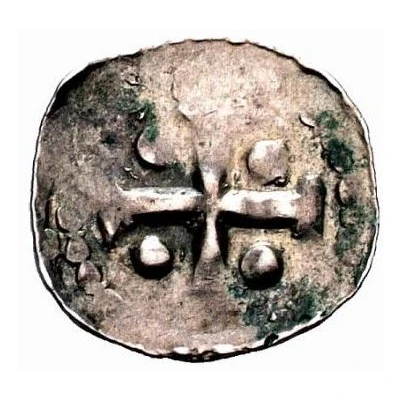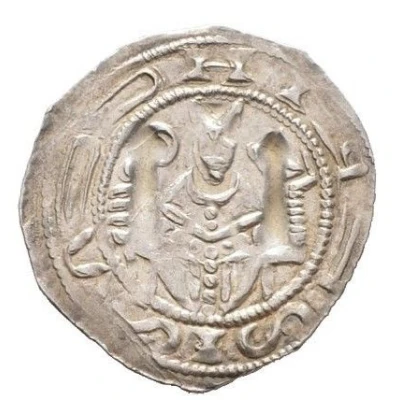
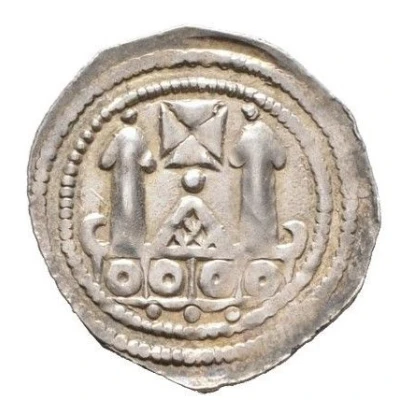

© H. D. Rauch
Denaro Friesach imitation ND
| Silver (.877) | 1.2 g | 20 mm |
| Issuer | Patriarchate of Aquileia (Italian States) |
|---|---|
| Patriarch | Godfrey of Hohenstaufen (1182-1194) |
| Type | Standard circulation coin |
| Years | 1150-1190 |
| Value | 1 Denier (1⁄12) |
| Currency | Soldo |
| Composition | Silver (.877) |
| Weight | 1.2 g |
| Diameter | 20 mm |
| Shape | Round (irregular) |
| Technique | Hammered (scyphate) |
| Demonetized | Yes |
| Updated | 2024-10-05 |
| Numista | N#413123 |
|---|---|
| Rarity index | 97% |
Reverse
Church with central dome or pediment flanked by two towers, each with a pellet above, all above an arcade, and below large cross. Line of three dots in exergue.
Comment
Bernardi says this type is differentiated from a true Friesach pfennig by its lower purity, and by the three dots in exergue. He gives a date of “second half 12th century,” but since Godfrey begins striking new types during his reign (1182-1194), we place the end date during his reign.
Interesting fact
One interesting fact about this coin is that it was minted during a time of great economic and political change in the Italian States. The Patriarchate of Aquileia, which was a powerful ecclesiastical state in the region, was facing challenges from rival powers and was forced to debase its currency to pay for military expenses. As a result, coins like this one were made with a lower silver content than previous issues, which led to inflation and economic instability. Despite these challenges, the Denaro remained a widely used coin throughout the region and is still prized by collectors today for its historical significance and rarity.
